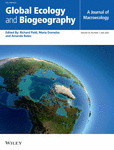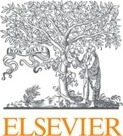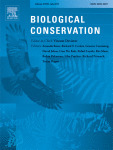In European continental shelf seas, 38% of the species threatened with extinction (9 out of 24 species) were identified as the most functionally distinct. By mapping extinction risk in the multidimensional species trait space, we showed that species with the greatest risk of extinction are long-lived and of high trophic level. We also identified that the most functionally distinct species are sparsely distributed (4% of the total area on average) and have scarce abundances (<1% of the relative mean abundance of common species).
Research and publish the best content.
Get Started for FREE
Sign up with Facebook Sign up with X
I don't have a Facebook or a X account
Already have an account: Login
Revue de presse et du net par le Pôle de partage des connaissances S&T de l'Office français de la biodiversité
Curated by
DocBiodiv
 Your new post is loading... Your new post is loading...
 Your new post is loading... Your new post is loading...
|
|
















via @Noemie_Coulon @UMR_BOREA